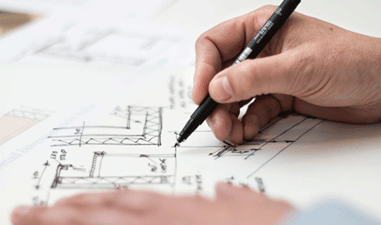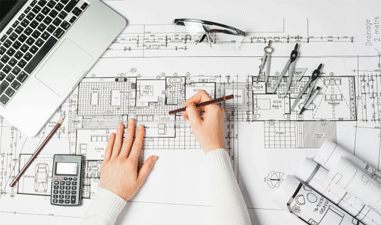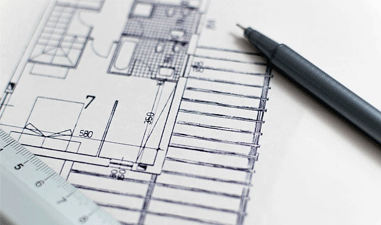

The economy thrives on the businesses around us. Most of the large to medium-scaled businesses have several operations occurring at several places around the world. While we don’t usually see a company starting a new operations center on a daily basis, such kind of projects are often astonishing. A lot of work is put into construction, interior design and setup of such offices. Commercial interior design companies are often hired for such kind of ambitious projects. Sometimes, millions and millions of dollars are spent on building workspaces.
Such a high investment in building a commercial workspace shows its tremendous importance. This is one of the primary reasons why commercial interior design services are hired by enterprises to get things done the right way. Professionals ranging from civil engineers to architects to office interior designers are involved in such a comprehensive project.
However, there are times when some roles in such a project are highly underrated. One such role is of a commercial interior designer. Sometimes they are called when most of the office is done and sometimes they are completely excluded from the project to avoid extra costs. The reason behind this is their mere perception. Commercial Interior designers are treated decorators who are responsible for selecting the accessories, color palettes and décor for the workspace. CIDQ which is an official council for the interior design qualifications states that commercial interior designers are also responsible for life safety, health, and welfare of the employees and staff who are part of an enterprise. Interior designing a multi-disciplinary field that incorporates various technical and creative solutions to build a matured professional environment. Here are some of the important duties performed by a commercial interior designer while designing an office:

This is the first and foremost role of an interior designer. Once a brief of the space and work has been obtained, interior designers start defining goals and timelines for a corresponding workspace. Sometimes, designers are also concerned with redefining the look of existing workspace for a refresh.
Problems arise when architects are given the duties which should have been performed by an interior designer. Architects are primarily concerned with the space and arrangements of the office workspace. Hence, they are unable to integrate existing and modern technologies in the office. The commercial interior design keeps a track of the latest office technology trends and ensures that they integrate them when asked by clients. Clients must define their office building budget before the project begins. This ensures that the commercial interior designers are able to integrate the best possible technology within the defined budget. A budget also defines the duties performed by the commercial interior designer. Several types of duties include space management, budget analysis, feasibility research, conceptual mock-ups, occupant calculation, selective specifications, etc.

This phase deals with the core aspects of any interior design project. The interior designer organizes the tasks in the specified timeline once the scope of the project is understood in this stage. This planning also deals with programming the project budget as per the project timeline, ensuring that the costs are in line with the designated time frame.

This is one of the crucial phases of any interior designing project. It deals with aspects like descriptive drawings, space graphs, real-time sketching, animations, and virtual walkthroughs. This is done keeping the planning phase in mind. The work done under this stage is usually depicted in the form of product overviews, material mock-ups, and samples. This kind of work is done for the interiors of the office once the exterior work has been handed over by the architect to the concerned commercial interior design company.

All the object specifications are part of this task. During this stage, a commercial interior designer is responsible for several duties like entities, décor, finishing, lighting and management systems. Lookalike renders prepared by the designers are able to give a real-like look to the clients. A visual representation of the work gives clients confidence in the work to be done by the designers.

One needs to keep track of every activity up taken during a project. This ensures no essential part is left out while designing offices. Such kind of documentation is collaboratively made by architects and interior designers. A collaborative document collaborates a detailed note of external and internal activities at the same place. Well scripted documentation has several advantages like design mapping, permit tracking, and easier renovation and redesigning processes. Documentations for any kind of design project establish a through and through seamless progress.

Behind every successful project, there lies a confident leader. This holds true for commercial interior design projects too. A good administrator designer monitors the work done by laborers as intended. Such a project manager is also responsible for syncing the changes made at any stage so that incorporated as per the client’s needs. Administration done by a designer includes several duties like creating to-do lists, regular inspections, payment authorizations, task verification, and seamless productions.
The aforementioned six duties give brief information about several duties performed by a commercial interior design services provider. A deeper insight into each section lets us analyze the importance of hiring a professional for designing workspaces. A commercial interior designer also takes care of employee lifestyle and ethics while making decisions. It assures that the workspace encourages the employees at their best. All in all, it results in an outcome that makes everyone happy, making the project worth the extra effort.